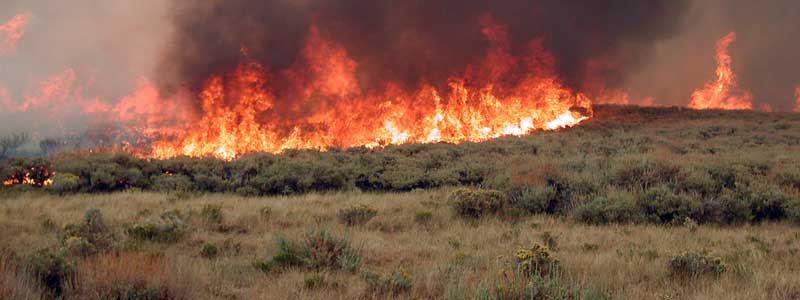Wildfire Risks on the Plains
As Colorado’s population continues to grow, significant and rapid construction expands into once “wild” prairie. The increase of homes and traffic in these areas brings a heightened risk of accidental fire starts and escapes.

Population Growth Increases Wildfire Risks on the Plains
As Colorado’s population continues to grow, significant and rapid construction expands into once “wild” prairie and forested landscapes.
- The increase of homes and traffic in these areas heightens the risk of accidental fire starts and escapes.
- Grasses are dry during much of the year; they ignite easily and burn quickly.
- Having your home or property on, surrounded by, or adjacent to these abundant dry fuels puts you and your property at risk. Residents need to know what measures can help reduce wildfire risks on the plains.

Coming Soon:
Overview of Grassland Fire Behavior & Management Approaches
In response to the complex challenges posed by fire risks in grasslands, we’re excited to announce the upcoming release of an online resource developed in collaboration with the Southern Rockies Fire Science Network and the Great Plains Fire Exchange.
This comprehensive overview aims to equip land managers, policymakers and partners with essential knowledge on grassland fire behavior and effective management approaches. Grasslands, the most imperiled terrestrial ecosystem on earth, face numerous threats including altered wildfire regimes, invasive species, and impacts of human land use and climate change.
Our new resource will be available Summer 2024, complete with an easily accessible downloadable PDF. Stay tuned for this valuable tool to enhance your wildfire management strategies.

